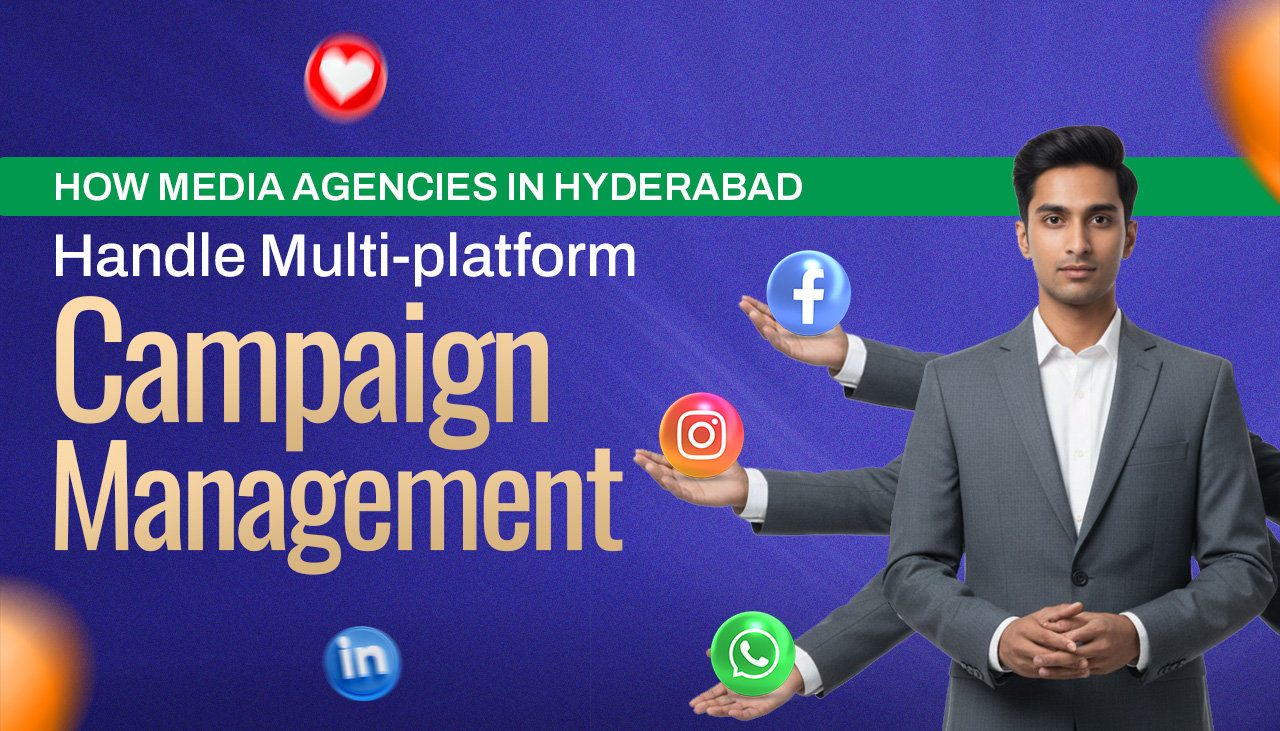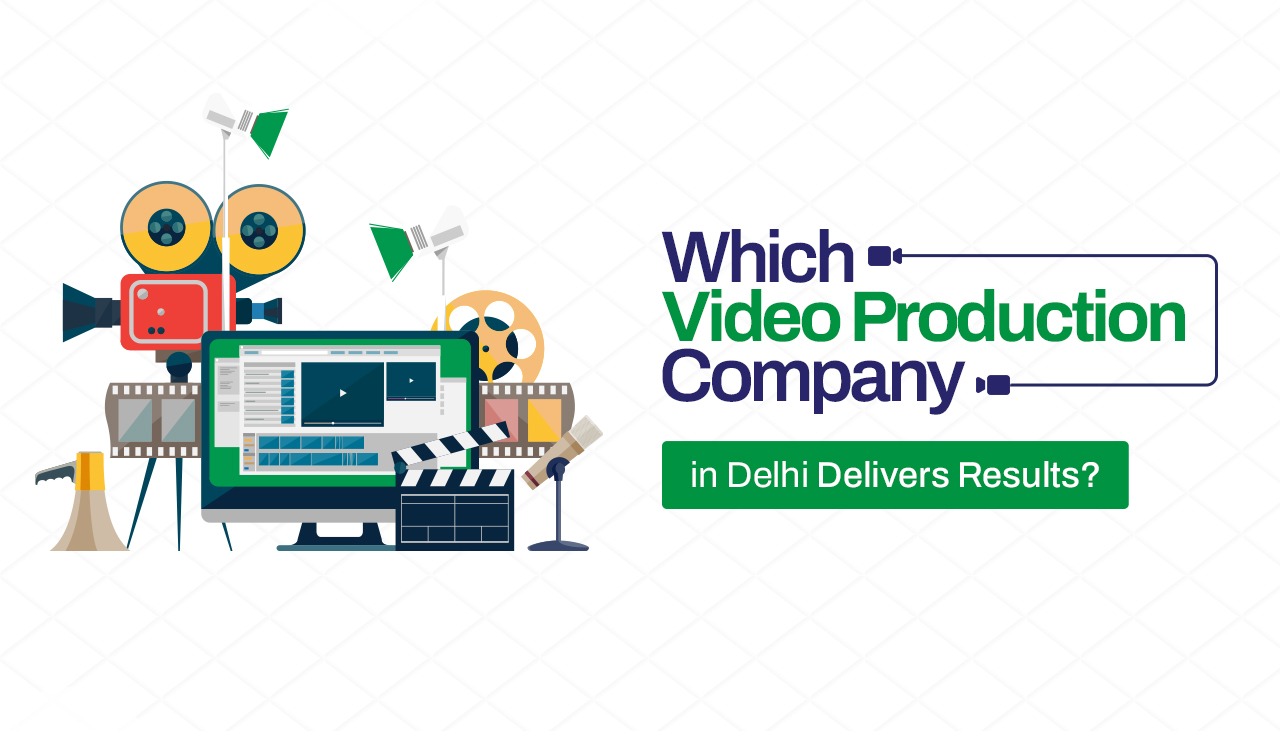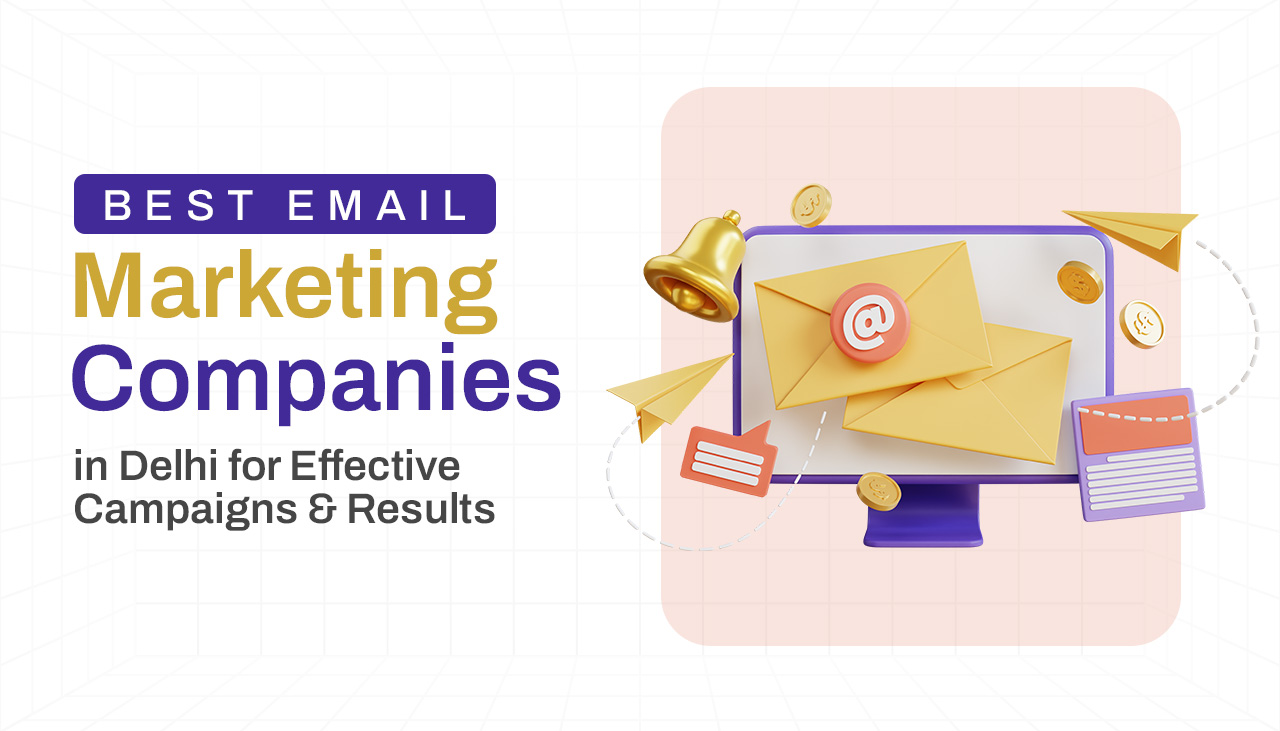Hyderabad has rapidly emerged as a powerhouse for innovation, thanks to its booming tech sector, vibrant startup ecosystem, and a strong presence of traditional industries embracing digital transformation. This dynamic business landscape has made the city a prime ground for digital marketing innovation. At the heart of this evolution are media agencies in Hyderabad, like Jai Veeru Creatives, who go far beyond just running ads. We specialize in data-driven, ROI-centric campaign strategies that blend creativity with performance. Our approach integrates the power of social media, search engine marketing, performance campaigns, and video storytelling to build meaningful engagement and drive real business growth. As a leading player in ad agency marketing in Hyderabad, we don’t believe in one-size-fits-all solutions
1. Understanding the Client & Defining Goals
Every good campaign starts with understanding. Agencies in Hyderabad spend time with you—your vision, your products or services, target audience, budget, and timelines. They ask:
- What are your business metrics? (Leads, sales, sign‑ups, downloads, awareness?)
- Which platforms are you strong on, and where do you want to grow?
- What’s your audience profile? Age, location, interests, devices used, and online habits.
Based on this, goals are set. For example, “Increase leads by 25% in three months via Google Ads + Meta platforms” or “Boost brand awareness among 25‑35‑year‑olds in Banjara Hills via Instagram Reels + YouTube.” Goals guide where efforts go.
2. Platform Selection & Strategy Mapping
Not all platforms are equal, and not all are right for every brand. Agencies in Hyderabad choose platforms based on where the audience spends time and what kind of content engages them.
- Search Ads / Google Ads: Great for intent‑driven traffic—when people are already looking for your product/service.
- Social Media (Facebook / Instagram / Meta, etc.): Excellent for awareness, engagement, retargeting.
- YouTube / Video Platforms: For storytelling, visual impact, and reach.
- Display / Programmatic Advertising: For remarketing or awareness across the web.
After shortlisting platforms, the agency creates a strategy map: which platform for which goal (e.g., awareness, consideration, conversion), what media formats (video, static image, carousel, stories), what creative theme, and how budgets will be split.
3. Budgeting & Scheduling Across Channels
A key challenge in multi‑platform campaigns is budget allocation and timing. Some platforms cost more per click or impression, but deliver higher value. Agencies often:
- Run small tests first on cheaper platforms or with smaller budget splits to see what works.
- Use past data (from your business or similar ones) to estimate Cost‑Per‑Acquisition (CPA), Cost‑Per‑Click (CPC), and Return on Ad Spend (ROAS).
- Allocate more budget to channels that show potential or early success.
- Time campaigns to coincide with product launches, seasonal demand, or events (for example, festivals, sales, college semesters in Hyderabad, etc.).
4. Crafting Creative That Resonates Locally
Hyderabad is diverse—people speak Telugu, Urdu, Hindi, English, etc.; preferences vary between HITEC City, Secunderabad, old city. Good agencies understand this:
- Localize creative—language, visuals, cultural touchpoints.
- Match formats: e.g., short‑form video for reels and stories; clean banners/display ads; search ads with local keywords.
- Adapt messaging for each platform: what works on Instagram might not work on Google Search.
5. Tracking & Attribution
Running campaigns across multiple channels means you need to know what’s working, what isn’t. Agencies integrate measurement tools:
- Use UTM parameters, tracking pixels (Meta, Google, etc.), and conversion tags.
- Set up dashboards (internal or tools like Google Analytics, Looker Studio) that bring together metrics from all platforms.
- Attribution modelling: decide how to credit conversions. Was the sale due to a search ad? A YouTube video? A Facebook retargeting ad?
Good tracking helps avoid wasted spend—for example, doubling down on ads that are converting and pausing or changing ones that are underperforming.
6. Continuous Optimization & A/B Testing
No campaign is perfect at launch. Agencies in Hyderabad lean heavily on optimization:
- A/B test different ad creatives, headlines, copy, and CTAs.
- Monitor campaign data daily/weekly—key metrics like CTR, CPC, conversion rate, ROAS.
- Shift budgets or adjust bids based on performance. If one creative or variation is doing well, scale it up. If another is underperforming, pause it or redesign.
- Monitor audience fatigue or oversaturation, refreshing creatives to keep engagement fresh.
7. Reporting, Learning & Scaling
Agencies don’t just execute—they report, learn, and scale.
- They send periodic reports (weekly, bi‑weekly, monthly) with transparent metrics: what was spent, what was achieved, what worked & what didn’t.
- Based on the outcomes, they adjust strategy: maybe pull back from a platform or try a new one (e.g., TikTok, local video apps).
- They scale what works: increasing budgets, running new creatives in the same successful patterns, and expanding targeting.
8. Handling Platform Complexities & Compliance
Each platform (Google, Meta, YouTube, etc.) has its rules, creative specs, and policy requirements. Hyderabad’s media agencies stay updated:
- Ensuring ads don’t violate ad policies (misleading claims, unsuitable content).
- Keeping up with new formats or algorithm changes (e.g. changes in Meta’s ad delivery, Google’s ad ranking, YouTube’s video ad policies).
- Optimizing for devices (mobile / desktop) since mobile usage is high.
9. Using Tech & Automation
To make life easier and get better results, agencies often use tools:
- Bid‑management tools (to adjust bids automatically), ad scheduling tools.
- Creative asset management (so creatives are organized, versioned).
- Automation for scaling (rules to pause or scale campaigns based on performance thresholds).
- Tools for audience insights, behavior analytics, and competitor analysis.
10. Client Collaboration & Transparency
What sets the best apart in Hyderabad is good collaboration:
- Regular check‑ins: weekly or bi‑weekly reviews.
- Sharing insights, not just numbers—why something worked or didn’t, what learning can be leveraged elsewhere.
- Clear communication of budget spend, results, and expectations.
When the agency and client work as a team, multi‑platform management becomes smoother and the results are better.
Why Doing It Right Matters
If a campaign isn’t managed well across platforms, you risk:
- Wasting money on underperforming channels or creatives.
- Mixed messaging or inconsistency that confuses your audience.
- Not knowing which channel is really contributing, so you can’t optimize for ROI.
But when it’s done well, you get synergy—one platform reinforcing the other. You build awareness, engagement, and conversions more cost‑efficiently. That’s what agencies in Hyderabad aim for.
Final Thoughts
Multi-platform campaign management isn’t easy. It takes a solid mix of strategy, creativity, data, and ongoing learning. But when it comes to finding a trusted digital marketing service in Hyderabad & best advertising agency in Delhi NCR, agencies like Jai Veeru Creatives stand out by blending deep local insight with proven global techniques. When you partner with an agency that sees your business as more than just ad spend—one that’s invested in your growth, tests every angle, optimizes constantly, and communicates openly—you don’t just run campaigns, you drive real, measurable results. If you want, I can share a case study of how Jai Veeru Creatives handled a multi‑platform campaign and what we learned. Want me to get that ready?
FAQs
It means running a coordinated marketing campaign across more than one advertising or content platform—e.g., Google Search + Facebook + YouTube + Display—to reach audiences in different places, with different kinds of content/formats.
Each platform has strengths: some capture active intent (Google Search), some help raise awareness and engagement, and others are great for retargeting. Using multiple platforms means you can reach people at various stages of their buyer’s journey, reinforce messaging, and optimize for what works best.
By understanding your audience, goals (awareness, leads, sales), your budget, what kind of creatives you have, past performance data if any, and which platforms your competitors or peers are succeeding on.
CTR (Click‑Through Rate), CPC (Cost per Click), CPM (Cost per Mille or impression), Conversion Rate, CPA, ROAS (Return on Ad Spend), frequency (how many times someone sees your ad), bounce rate, engagement metrics (likes, shares, watch time, etc.).
Depends on campaign size and spend. Usually daily or every few days for budget/delivery/creative tweaks; weekly or bi‑weekly for strategic shifts; monthly for reviews and scaling.
Attribution is about giving credit to the right touchpoints (ads, platforms, interactions) that led to a conversion (sale, lead, etc.). It helps you understand which platform or creative is doing the heavy lifting so you can invest more wisely.
Initially based on experience, audience insights, and potential performance. Then adjusted as data comes in—platforms that do well get more budget. Also, high‑cost platforms need careful monitoring so spending is efficient.
They differ a lot. For example, video ads may need high motion, quick hooks for YouTube or Reels; display banners need clear visuals and minimal text; search ads rely on strong keyword relevance; social ads need engaging visuals + captions + sometimes sound off friendliness. Also, specs (size, duration) vary.
By using local languages/dialects, understanding cultural events/festivals, audience preferences, location‑based targeting, and building creatives that resonate with local lifestyles. Also,o by considering device usage, mobile first is often more important.
Clear reporting (what was spent vs what results achieved), explanations of what worked and what didn’t, recommendations for changes, frequent updates, shared dashboards or insights so you’re not in the dark. Also, be upfront about fees, expected timelines, and possible risks.



